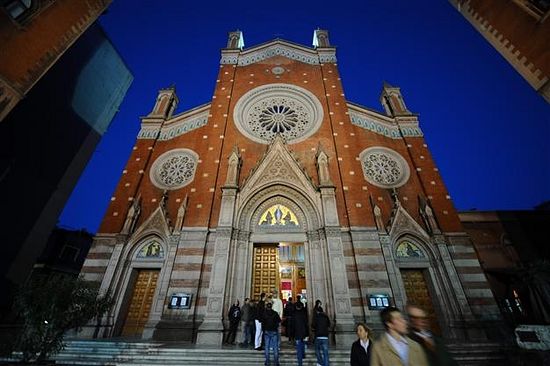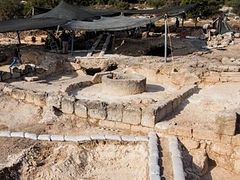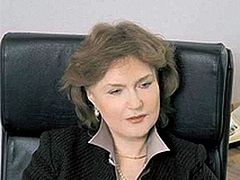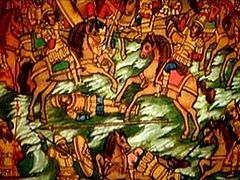Source: Hurriyet Daily News
By Niki Gamm
If the Eastern Orthodox Churches had not split from the Roman Catholic Church in 1054, the Ottoman Turks would have found it much more difficult to conquer Constantinople.
The break between the Eastern Orthodox Churches and the Roman Catholic Church is dated to 1054, although some believe the circumstances that led up to the rupture started nearly 900 years earlier. Aside from doctrine, the claim of the Roman Catholic Church to have precedence over the Eastern Orthodox Churches contributed the most to the break. An attempt to settle the differences instead turned out to be the reverse, thanks to the personalities of the head of a Roman Catholic delegation that had been sent to Constantinople by the Pope and the Orthodox Patriarch of the time. The former excommunicated the latter and then the latter excommunicated the former, basically each cutting the other off from participating in certain church rituals. The impasse was not able to be solved, though no one expected the rupture to be final at the time.
While the actions of the two men in hindsight seem slight, they had serious consequences – most importantly the Byzantine emperor could not appeal to the West for aid against the Turks without alienating his subjects who were members of the Orthodox Church. The Fourth Crusade led to the capture and sacking of Constantinople in 1204 and this was done with such savagery against the Byzantine population and such desecration of the Orthodox churches that, to this day, the break with the Roman Catholic Church has remained an open wound.
Pope Innocent III (r. 1198-1216) who accepted some of the gold, jewels and money taken by the “crusaders” summed the situation up as follows: “How, indeed, will the church of the Greeks, no matter how severely she is beset with afflictions and persecutions, return into ecclesiastical union and to devotion for the Apostolic See, when she has seen in the Latins only an example of perdition and the works of darkness, so that she now, and with reason, detests the Latins more than dogs? As for those who were supposed to be seeking the ends of Jesus Christ, not their own ends, who made their swords, which they were supposed to use against the pagans, drip with Christian blood, they have spared neither religion, nor age, nor sex.”
Following the re-conquest of Constantinople by the Nicaean Greeks under Emperor Michael VIII Palaeologus in 1261, there were further attempts at reuniting the two churches. John V Palaeologus (r. 1341-1391 with breaks) even went so far as to convert to Catholicism as he sought aid in Western Europe against the Turks, who by now had started on their road of conquest. But no significant help followed.
Meetings were held, especially a last one in Florence in 1439 resulted in the signing of a decree of reunion. However, some of the Orthodox delegation refused to sign, while others withdrew their signatures after they returned to Constantinople. The people of Byzantium made it clear that they preferred to remain Orthodox under the rule of the Turks than accept the supremacy of Rome.
After the 1453 conquest
Several months after the Ottoman Turks under Sultan Mehmed II conquered Constantinople, the ruler formally established the supremacy of the Greek Orthodox Church over the Christians who lived in his realm. Some months later, he did the same for the Jews by appointing a hahambaşı, or chief rabbi. That left out all of the Christians who were not Greek Orthodox, such as the Armenian Church and the Roman Catholic Church. The latter were to be found in the Genoese part of the city – Galata and Pera. As for the Armenians, the Byzantines had only allowed them to settle outside the walls of the city, since they considered their version of Christianity heretical.
Sultan Mehmed II finally established an Armenian patriarchate in 1461, following his conquest of Trabzon, which put an end to the last remnant of Byzantium. This patriarchate included all Christians who were not Greek Orthodox. Although historian Stanford Shaw in his book “History of the Ottoman Empire and Modern Turkey” lists these Christians as the Gypsies, Assyrians, the Monophysites of Syria and Egypt and the Bogomils of Bosnia, he does not mention the Roman Catholic churches. However, just shortly after the conquest, the pope of the time, Nicholas V, issued a call to all of Christendom for a crusade against the Turks. While this possible “threat” disturbed Sultan Mehmed II enough to have him strengthen Istanbul’s walls and carry out campaigns into the Balkans, he does not seem to have been seriously concerned about the few Roman Catholics remaining in the city; they would have been granted the same rights and privileges the other churches were given under the Ottomans.
Of the churches that existed at the time of the conquest, the biggest were the Church of St. Paul and St. Domenico, which dated from 1323-1337, but Mehmed II had this converted to a mosque. The Cathedral of St. Michael was torn down between 1544 and 1550 to make room for a caravanserai. The Church of Santa Maria Draperis was built in 1584, destroyed by fire and earthquake and rebuilt several times in different locations. The Church of St, Antony was destroyed in 1606 and replaced with a mosque, while the Church of St. Francisco was pulled down following a fire in 1660 and replaced by a mosque. The Church of St. George changed hands several times, but has kept its historical characteristics. Only the tower remains from the 15th century St. Benedict Monastery. All of the other Catholic churches were built in the 19th century, such as the Church of St. Peter and Paul, whose architect was the renowned Gaspare Fossati. The largest Catholic church in Istanbul today is that of St. Anthony of Padua and was built at the beginning of the 20th century.
Although during the time when the Crusaders held the city a Latin patriarchate was established in Kadıköy, this was eventually abandoned after the re-conquest by the Byzantines. It was not until 1659 when the Roman Catholic Church appointed a bishop to oversee affairs in Istanbul and the Ottomans did not see any problem with that.
A number of other churches in the Ottoman Empire were tied to the Roman Catholic Church and these included the Armenian Catholics, Syrian Catholics, Assyrian Catholics, Maronites, the Catholics of Hungary, Croatia and northern Albania.
As early as the 16th century, the French showed a keen interest in defending the rights of Christians in the Ottoman Empire. They were able to obtain concessions from the Ottomans about repairing churches and granting special rights to the various Catholic orders, such as the Dominicans and the Jesuits. Although the Greek and Armenian Orthodox Churches objected, France’s usefulness in diplomatic and political ways gave it leverage to position itself as the protector of Christianity. By the end of the Ottoman Empire, all of the larger Roman Catholic churches were considered French Catholic, even though the priests conducting the services were much more likely to be Italian.




